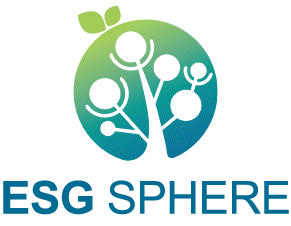Climate and Nature Governance Strategies
As a citizen of the world, Wistron is actively supporting global net-zero trends by taking climate action and aligning with international standards to increase the transparency of our climate governance. To effectively manage climate risks and opportunities, Wistron communicates with stakeholders on climate issues, leveraging an international framework - the Task Force on Climate-related Financial Disclosures (TCFD). In 2021, Wistron officially signed on as a TCFD Supporter. In addition to climate-related disclosures, we have also established risk and opportunity metrics and targets to continuously enhance management and disclosure quality. Our internal management processes include annual reporting of climate-related management indicators and response actions to the Board through the Corporate Sustainability Committee.
The Board serves as the highest governance body for climate change, water resources, biodiversity, and nature-related matters. It is responsible for steering overall execution strategies and supervising senior management in managing climate- and nature-related risks and opportunities, as well as monitoring key performance indicators. As a functional committee serving directly under the Board, the ESG and Information Security Committee comprises 100% of directors and includes one independent director. The ESG Executive Committee, established under the ESG and Information Security Committee, is co-chaired by the President & CEO as well as the Chief Sustainability Officer and is responsible for overseeing and managing sustainability issues. In 2022, in line with the group's decision, we formally adopted Enterprise Risk Management (ERM) mechanisms, integrating operational and sustainability risks and opportunities in compliance with the company's "Risk Management Policy and Procedure." Under the mechanism, the Risk Management Office and Sustainability Office will regularly review sustainability risks and opportunities as well as response measures in the environmental, social, and corporate governance dimensions. This includes but is not limited to our progress in climate change, water resources, biodiversity, and nature-related issues, as well as identification of and response measures to emerging risks. In particular, the Chief Sustainability Officer will report to the ESG and Information Security Committee on sustainability-related issues (incl. climate, water, and nature) at least twice a year.

The Risk Management Team conducts an annual comprehensive assessment and analysis of various risk scenarios, including those related to climate, for risk identification, risk analysis, risk evaluation, risk response and monitoring, and risk reporting and disclosure. Units responsible for risks are required to assess the identified risk scenarios, propose improvement plans based on the residual risk levels after evaluation, and develop risk response and adaptation strategies, which are incorporated into the annual enterprise risk management report. For the identified material climate- and nature-related risks, corresponding Key Risk Indicators (KRIs) are to be established in accordance with Wistron’s risk management process to enable real-time tracking and monitoring. This systematic approach ensures that senior management can continue to maintain oversight of climate- and nature-related issues and targets.
To promote sustainability strategies, we have established dedicated task-based teams for four out of Wistron's Six Sustainability Strategies: "Sustainable Supply Base," "Green Products," "Recycling," and "Decarbonization." The teams integrate global units across the group to promote sustainability and net-zero projects, covering the entire value chain, from supply chain management to Wistron operations to customer collaboration, thereby comprehensively strengthening the company’s sustainability resilience to address future challenges. The Sustainability Office, under the President & CEO, is responsible for integrating and rolling out the Six Sustainability Strategies. Each month, the Sustainability Office reports to the President & CEO on the progress of sustainability strategies and projects targeting climate and nature issues. At least once every 6 months, the Office also reports to the ESG and Information Security Committee as well as the Board on related progress and future plans.
For our annual identification and analysis of climate risks and opportunities, we also offered training and climate workshops this year, taking the opportunity to bring in third-party professional mapping data and geographic information systems (GIS). Several physical climate scenarios were also applied, including SSP1-RCP2.6, SSP2-RCP4.5, SSP3-RCP7.0, and SSP5-RCP8.5. Using four-time horizons - short term (1-3 years), medium term (3-5 years), long term (5 years and beyond), and up to the end of the century - we conducted scenario analyses of physical climate risks our locations and supplier locations and developed risk adaptation plans accordingly. For transition risks, Wistron simulated decarbonization transition stressors under various scenarios, adopting assumptions such as domestic regulations, corporate commitments, IPCC temperature, and net-zero targets. These assessments estimated potential quantifiable financial impacts and residual risks arising from external pressures and trends, and projected management costs to support the planning of future transition roadmaps. See the 2024 Wistron Climate and Nature Report for Wistron's climate- and nature-related management, achievements, and efforts.







